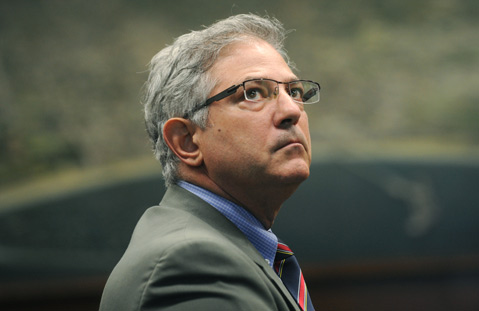‘Bubble Ordinance’ Not Yet Popped
Supreme Court Ruling Likely Won't Change S.B. Abortion Protest Law

Despite this week’s Supreme Court decision declaring unconstitutional a Massachusetts law limiting how close anti-abortion protestors can get to medical clinic entrances, it appears that similar restrictions enacted by the Santa Barbara City Council in 1993 could probably withstand legal challenge.
In contrast to the Massachusetts law, which made it a crime to stand within 35 feet of any entrance to any reproductive health clinic, Santa Barbara’s “bubble ordinance” established a much more modest buffer zone, limiting public demonstrations to no more than eight feet of the driveway leading to Planned Parenthood. Also restricted were entrances to other medical clinics where abortion services were provided and churches. “We still need to do more research, but it appears our ordinance meets the concerns expressed in the Supreme Court decision,” said City Attorney Ariel Calonne.
The justices objected that the 35-foot barrier was excessive. At issue, according to their majority opinion, was the ability of sidewalk counselors to approach those entering clinics to provide them information about alternatives to abortion. Public sidewalks and public ways, the majority reasoned, have traditionally been key avenues for public discourse, and restrictions on free speech there should not be severely limited. Given the 35-foot buffer, sidewalk counselors found themselves forced to shout to be heard, making them appear threatening and intimidating. This, the majority found, deprived them of the ability to engage in “close, personal conversations and distribution of literature,” forms of expression traditionally “associated with the transmission of ideas.”
The Massachusetts law was passed after years of loud, rambunctious, occasionally violent protests outside a Boston clinic. Similar protests hit Santa Barbara in the early 1990s, with demonstrators affiliated with Operation Rescue congregating outside Planned Parenthood several times a week, chanting, leafleting, and occasionally masquerading as patients to distribute literature inside. At that time, an abortionist in Florida had been shot to death by a protestor, and arson claimed a clinic in San Luis Obispo.
A Santa Barbara doctor working with Planned Parenthood had been targeted by demonstrators who gathered outside his church on Sundays and outside his home, carrying large photos of aborted fetuses. One protestor from Poland lay down behind the doctor’s car, preventing him from leaving his driveway in the morning. When the doctor went inside to call the police, the protestor handcuffed himself to the rear axle of the car. The actions achieved sufficient intensity that Santa Barbara’s Planned Parenthood administrators felt compelled to train volunteers to act as escorts for those seeking services. In one incident, police and firefighters were called in response to a bomb threat. No bomb, however, materialized.
At that time, three members of the City Council were either members of the Planned Parenthood board or strong supporters. When Planned Parenthood sought protection, its organizers had strong allies on the council. The issue was hot and heavy, with both sides showing up in force. Among those testifying in support of a protective ordinance was current Mayor Helene Schneider. “It was hairy,” she recalled. “That was the first time I ever spoke in front of the City Council.”
Ultimately, the council adopted a measure that established a 100-foot buffer zone by the driveway leading to Planned Parenthood. Once inside this bubble zone, the ordinance stipulated that protestors had to withdraw to an eight-foot distance if asked to do so. Anti-abortion activists took their case to the American Civil Liberties Union, which declined support. They took the city ordinance to court and initially prevailed. By that time, more than 100 citations had been issued for violations. City Hall appealed, and in 1999, the 9th Circuit Court of Appeals would uphold the constitutionality of the Santa Barbara ordinance.
Included in that decision is language that went to the heart of the Supreme Court majority’s thinking, and that’s what makes Calonne believe the city’s bubble ordinance would survive scrutiny. Speaking to the city’s eight-foot buffer, the court ruled, “Conversation is easily possible at this distance.” Calonne suggested that if the council wished to be on the safe side, it could amend its ordinance further. Although protest activity in front of Planned Parenthood still takes place, the demonstrators are quiet and polite, and police can’t remember the last time they had to issue a citation.



